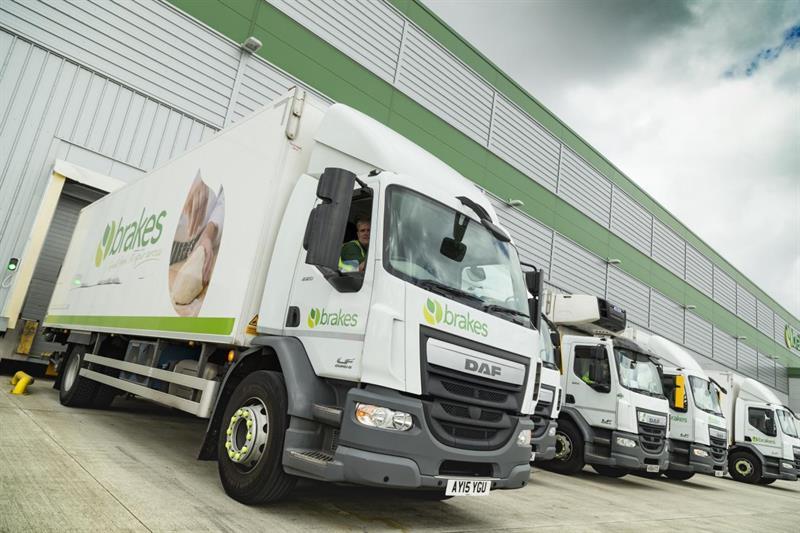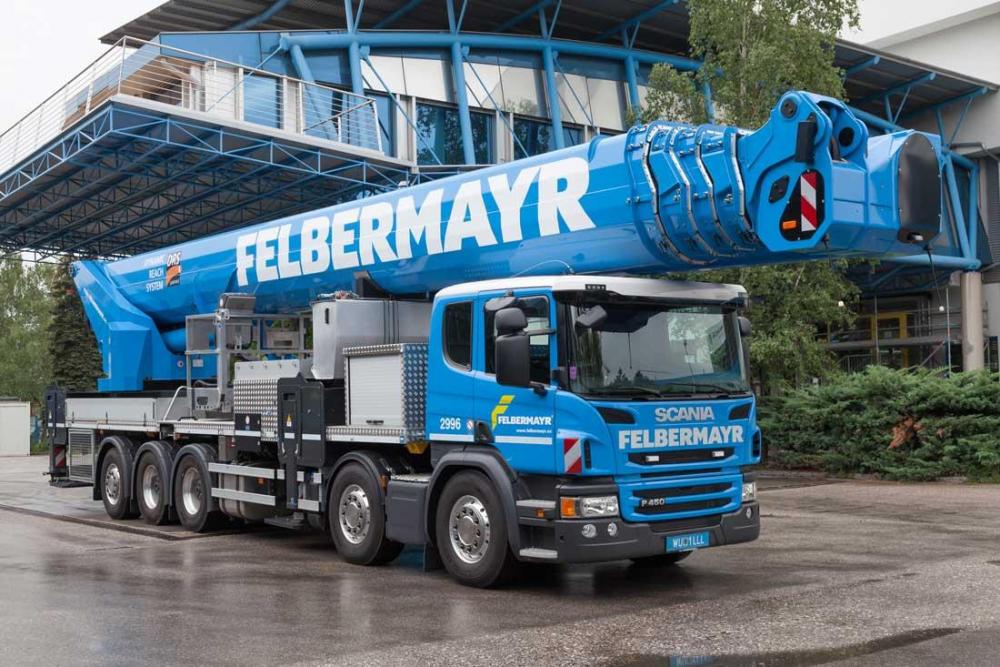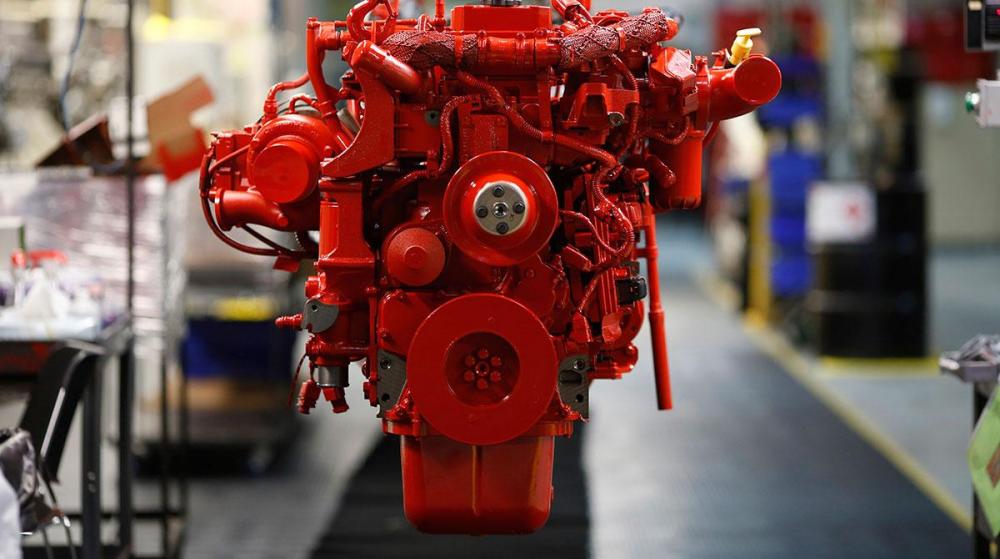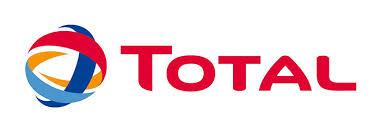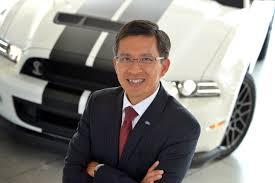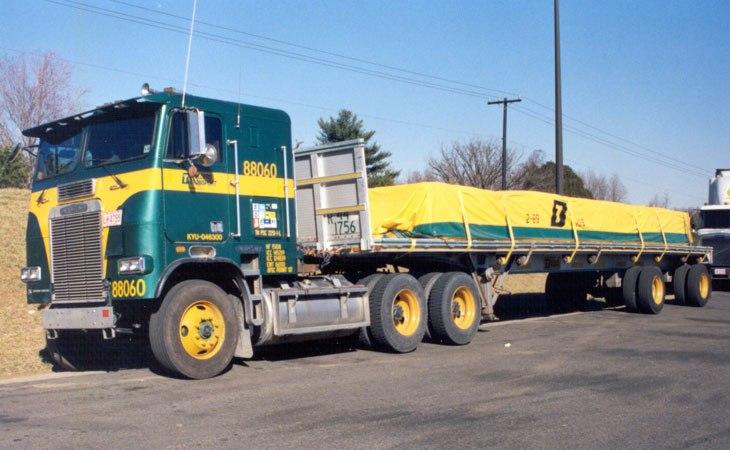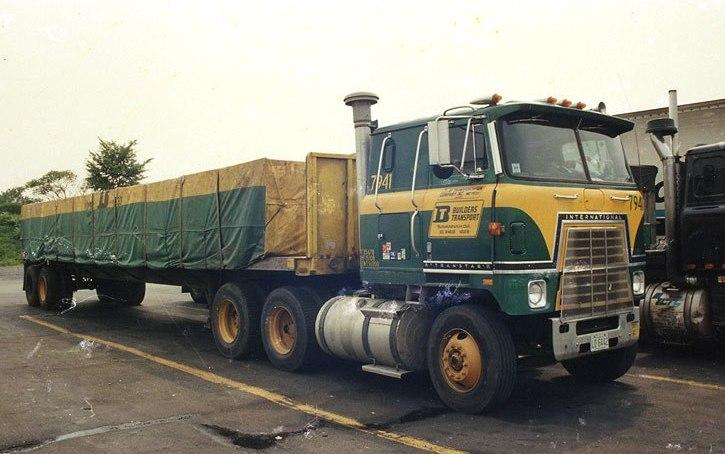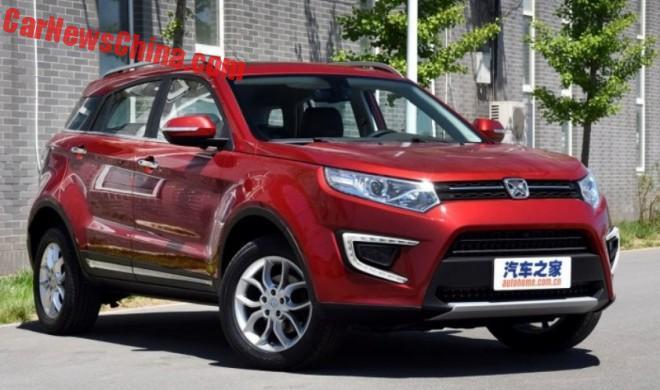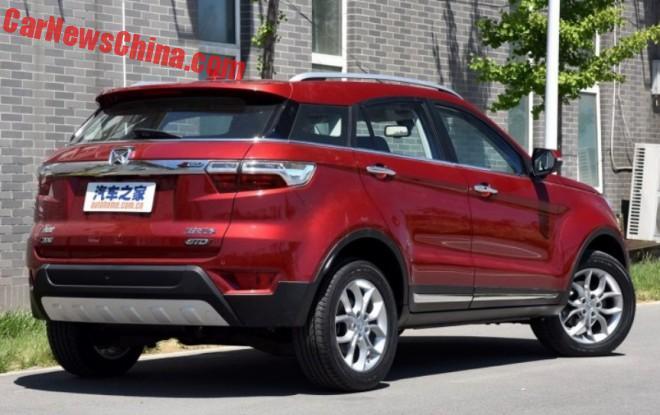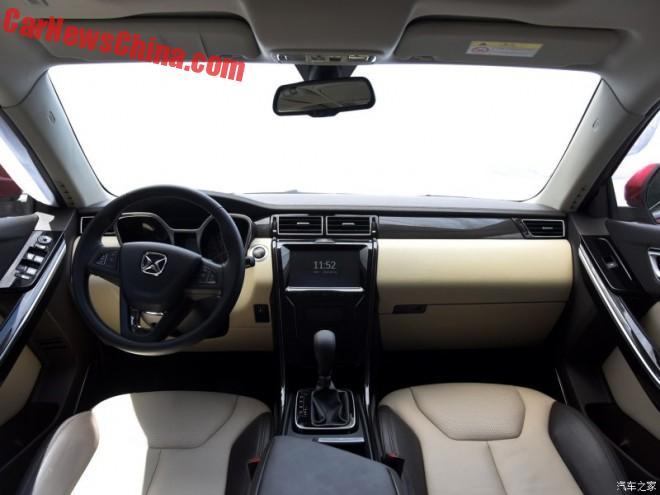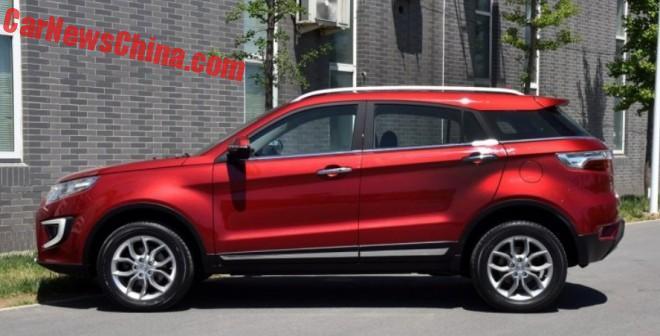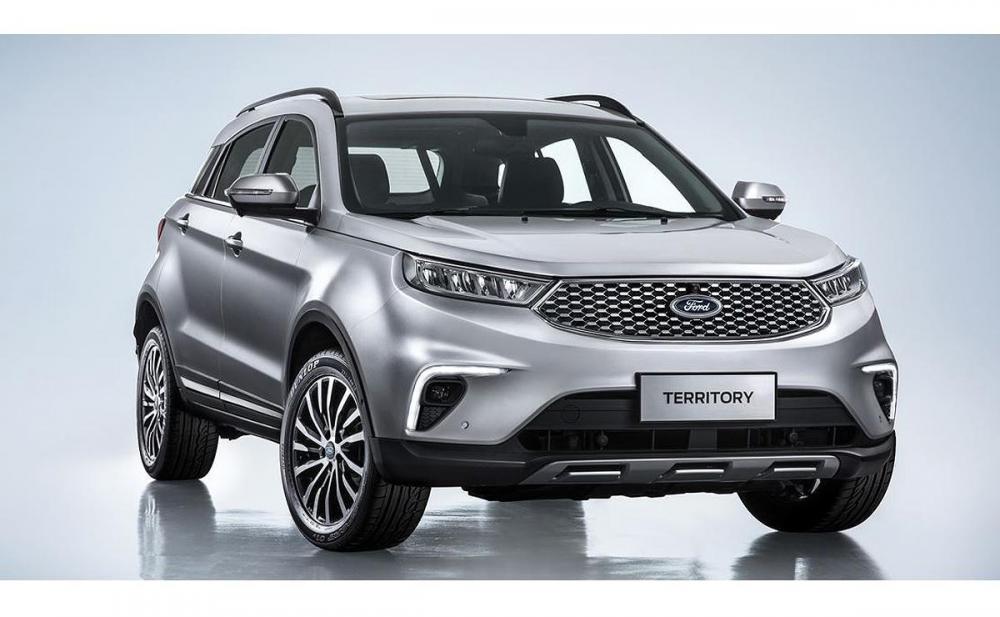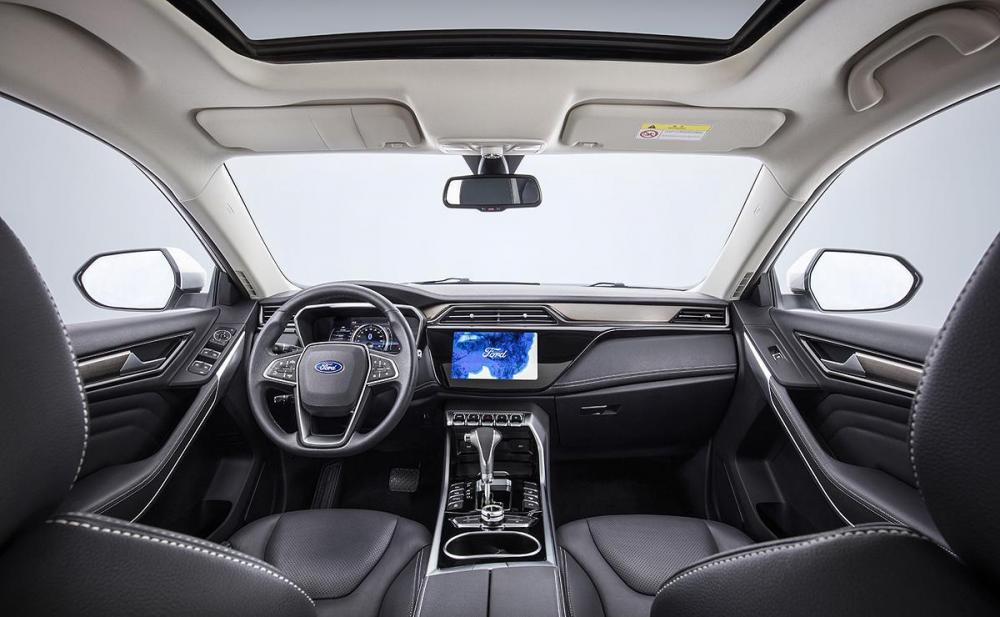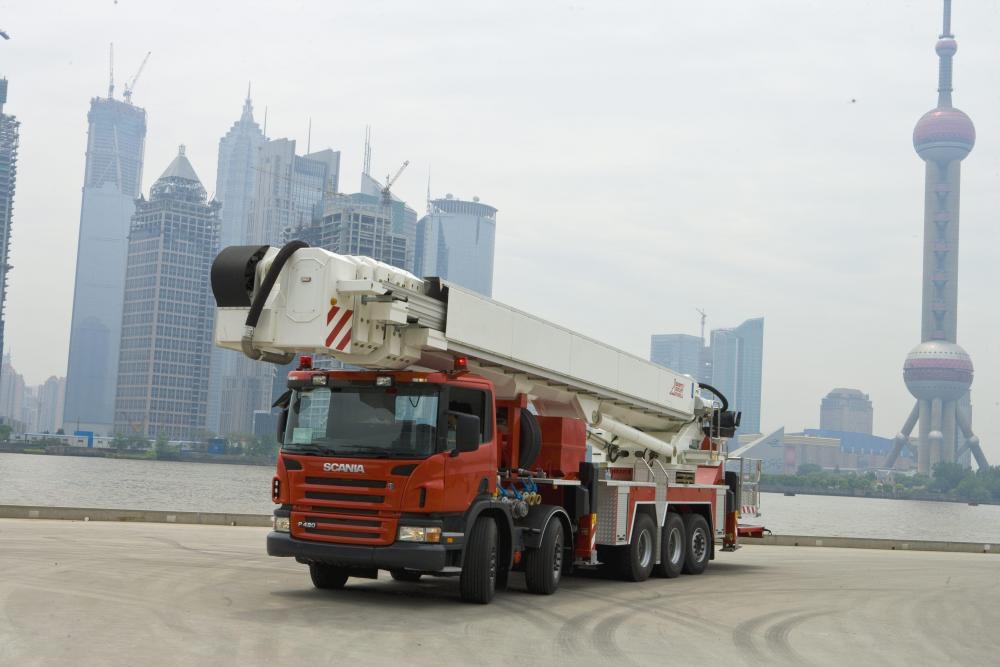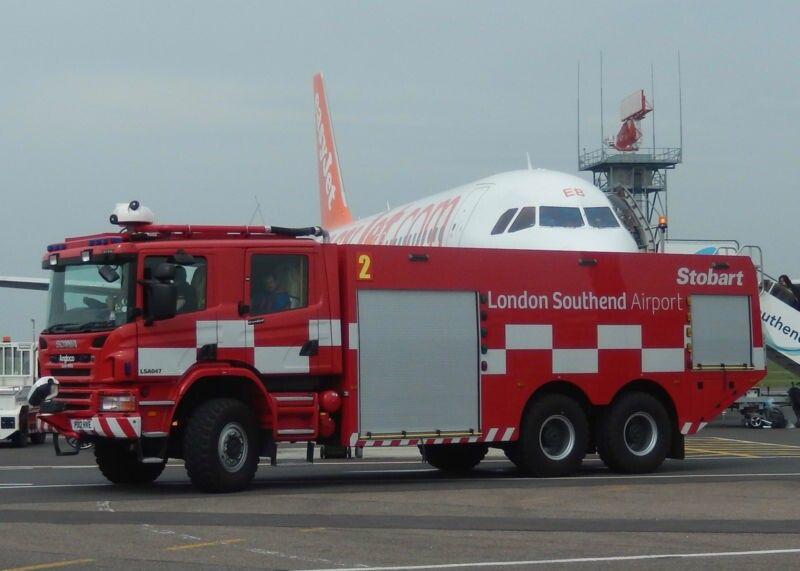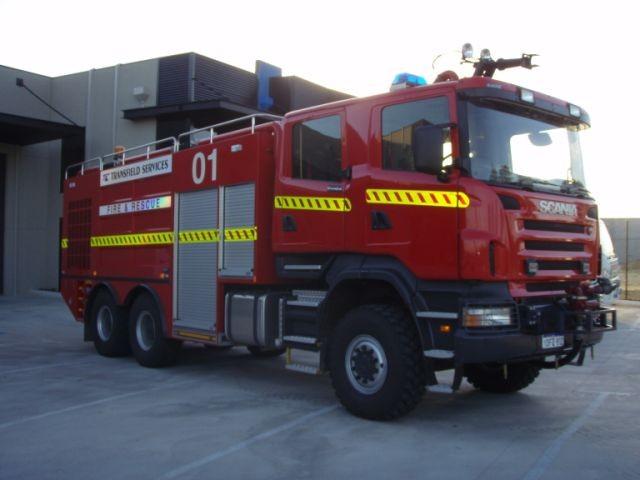
kscarbel2
Moderator-
Posts
18,868 -
Joined
-
Days Won
114
Content Type
Profiles
Forums
Gallery
Events
Blogs
BMT Wiki
Collections
Store
Everything posted by kscarbel2
-
-
The all-new "Kuzer" from UD Trucks - Made to Deliver Extra
kscarbel2 posted a topic in Trucking News
UD Trucks Press Release / August 1, 2018 Tight manoeuvring in tough situations. Squeezing through rush hour to make your next delivery. Is this your daily routine in a nutshell? Then step inside the Kuzer. The truck that fits your life. Light-medium duty just got real. It’s the new Kuzer. Made to Deliver Extra. . -
Volkswagen Group owned MAN Trucks exits Indian market
kscarbel2 replied to kscarbel2's topic in Trucking News
Here's the latest domestic market competition. They've come a long ways. It's cheap where it doesn't matter, and rugged where it counts. . -
Brakes halves NOx emissions with Shell GTL-fuelled DAF fleet
kscarbel2 replied to kscarbel2's topic in Trucking News
-
Transport Engineer / August 7, 2018 Foodservice business Brakes is reporting a 47% reduction in NOx emissions since switching its Park Royal, London-based fleet of DAF LF trucks to Shell Gas-to-Liquid (GTL) fuel. Results of the nine-month trial with the 50 LF 230 refrigerated vehicles have been confirmed in independent tests at the Millbrook facility, in Bedfordshire. Brakes also reports quieter running and odour-free refuelling at the pump. Importantly for Brakes’ urban operations, the use of Shell GTL Fuel – supplied in the UK by Certas Energy – means the requirement for periodic static regeneration of the DPF has been virtually eliminated, adding to fuel efficiency. Crucially, the fuel requires no vehicle modifications or changes to service intervals. “The trial of Shell GTL Fuel at our Park Royal depot has been running really well,” confirms Steve Webster, Brakes’ head of indirect goods and services procurement. “The feedback from the drivers has been overwhelmingly positive – the vehicles are running more quietly and we’ve seen a substantial reduction in the need to clean the particulate filters.” He adds: “The evidence has come back clearly showing that running Shell GTL fuel in a city centre has a big impact on NOx emissions – indeed, our own test saw a 47% reduction compared to running on diesel. “We have not waited for future technology either as there is no requirement to convert the vehicle.” DAF’s entire range is certified for use of GTL fuels, as well as for HVO (hydrotreated vegetable oil) which can deliver an additional well-to-wheel carbon saving of over 90%. .
-
Scania Group Press Release / August 6, 2018 The sky’s the limit for Felbermayr. Felbermayr, the international specialist in abnormal transport and lifting operations, is reaching further with the help of Scania. The Austrian company successfully uses the staggering Ruthmann Sky performance platform, mounted on a standard Scania 5-axle P 450 truck, to obtain a working height of 90 metres and an outstanding lateral reach of up to 42 metres. Lean approval process For these applications, special vehicles are commonly employed but the advantages of this combination are obvious: the Scania P 450 is a road-approved truck already so it does not need a separate approval process, and Scania offers European-wide vehicle services and support. “We already have about 2,600 work platforms in our fleet, but we were still looking for a solution with a higher lateral reach,” says Thomas Daxelmüller, Head of Felbermayr Operations in Lanzendorf, Austria. “With the Ruthmann telescopic boom, it is not only possible to achieve better rigidity, but to also save weight.” He adds, “This is the first time that a platform with a similar performance has been mounted on a vehicle with a 48-tonne maximum gross weight. With Scania, we have found the right partner as it is the only manufacturer of a five-axle chassis delivered directly from the factory.” Praise for the Scania P 450 With its extraordinary reach, the truck-mounted platform has been used in various assignments over the past few weeks, ranging from maintenance and repair of wind turbines to servicing petrochemical plants. Felbermayr driver Stephan Lux is already enthusiastic and says that “the first impressions of the vehicle are absolutely positive, and the driving characteristics of the Scania P 450 are also great.” .
-
Kenworth Truck Co. Press Release / August 3, 2018 .
-
UPI / August 7, 2018 Navistar Defense has received a $29.6 million contract from the U.S. Army for rocket-propelled grenade netting kits. The deal, announced Monday by the Department of Defense, comes under a three-year contract set to run through August 2021. Work will be performed in Illinois, and Army fiscal 2018 through 2021 capital funds will be used for the program. Rocket propelled grenades are a series of shoulder-launched anti-armor, anti-fortification and anti-personnel weapons that have been widely used by insurgent forces in Iraq, Afghanistan and other combat zones. They are standard weapons in many countries across the world. RPG netting is a metal cage bolted onto vehicles that are meant to cause the warhead to explode before it impacts directly on the vehicle's armor. Anti-tank rounds are designed to blow a hole in the armor and send fragmentation called spalling into the crew compartment, starting fires and injuring or killing the vehicle's occupants. .
-
Volkswagen Group owned MAN Trucks exits Indian market
kscarbel2 replied to kscarbel2's topic in Trucking News
The truck MAN has been building in India is a nice unit. It is older technology to realize a lower selling point, the demand of the Indian market. However, it's not a cheap truck. The cab is the proven last generation L2000, and the drivetrain and chassis are all first class (CNHTC aka. SinoTruk has produced this cab under license as well). . . -
Scania Group Press Release / August 7, 2018 It was the greatest party for many years at Scania’s head office in Latin America. The official debut of Scania’s new truck generation in the region gathered more than 4,000 dancing employees at São Bernardo do Campo, Brazil. The Latin American launches of Scania’s new truck generation in October will end the series of world launches. The highly acclaimed and prized trucks will then be available throughout the world. Running up to the Latin American launches two of the new trucks will carry out a spectacular journey through four countries – Brazil, Argentina, Chile and Peru. Moment of pride The start of this journey was turned into a mighty street parade at Scania’s head office and main factory in Latin America. All 4,000 employees in Sâo Bernardo do Campo took part in the event with great pride and team spirit. One of the trucks will make stops at dealerships in Latin America for events with customers, employees, brand fans and journalists. The second vehicle will visit Latin American examples of transformation to a more sustainable world, resulting in a five-chapter web series starting 29 October, the official launch date in the region. Driving the shift “We have already taken on the challenge of driving the shift toward more sustainable transport. But we know that changing the world is a journey, and we can’t do it alone. Through “The Journey”, we will demonstrate transformational approaches, or better yet, give voices and faces to the people who are in some way pursuing solutions,” says Christopher Podgorski, President and CEO of Scania Latin America. Following the regional launch, each country will host local events during the first half of 2019. “The response to the new generation has been extremely positive, including several awards and a significant increase in sales in Europe,” Podgorski says. “We are confident that Latin America will be no different, because our customers need cost-effective and sustainable solutions and they have the ideal partner in Scania.” .
-
Transport Topics / August 8, 2018 Cummins Pulls Ahead of Detroit Diesel to Lead in Powerplants of 10-Plus Liters Independent engine maker Cummins Inc. supplied the most diesel engines used in Class 8 trucks in North America in the first half of 2018, as it did a year earlier, although its overall market share dipped, WardsAuto.com reported. Cummins barely pulled ahead of Detroit Diesel Corp. to lead in engines 10 liters and over and dominated in engines under 10 liters. A Cummins executive pointed to three engines — the X15, X12 and a 9-liter — as driving the company’s success and underscored the work by its employees to keep up with truck makers’ near-record levels of production. The company introduced the X15 engine in July 2016. The X12 became available this year. The L9 was introduced in 2017. “We have had to have not only a good product, but deliver on increasing demand for that product in a pretty challenging ramp-up,” Rob Neitzke, Cummins’ executive director for North America truck OEM business, told Transport Topics. One industry analyst forecast in July that Class 8 production in 2018 could become the fifth highest ever if it stays on track. “Our plants are doing a great job of working with truck makers to make sure Cummins isn’t the reason they can’t build a truck, isn’t the bottleneck,” Neitzke said. The total number of Class 8 diesel engines installed in the first half of 2018 rose 25.7% year-over-year to 141,474. Cummins supplied 52,486, or 37% of them. In the first half of 2017, there were 112,511 engines, and Cummins earned a leading 37.3% share with 42,062. The figures come from a Ward’s report on North American factory sales of heavy-duty trucks, including their engines, released July 31. The report breaks Class 8 engines into two segments, with 10 liters as the dividing line. Turning to engines 10 liters and over, Cummins notched a leading 32.3% share, or 41,741 out of 129,100. Detroit, a unit of Daimler Trucks North America, was right behind with a 31.3% share, or 40,473 engines. A year earlier, Detroit led in the heavier category with a 34.4% share, while Cummins earned a 32.3% share in that period, too. Paccar Inc.’s truck brands — Kenworth Truck Co. and Peterbilt Motors Co. — together accounted for 66.3% of Cummins engines in the heavier class, up from 66.1% a year earlier. International Truck used the second-highest number of heavier Cummins engines — 11,483, up from 8,284 a year earlier. At the same time, all truck makers increased the overall number of proprietary engines with one exception. Mercedes-Benz engines plummeted compared with a year earlier — to 94 from 2,493, due to the near disappearance of its lighter Class 8 engines. Mercedes-Benz is an in-house brand of DTNA, which did not respond to a request for comment. Paccar used 16,894 of its MX engines compared with 12,968 a year earlier — supplying them almost equally in its Kenworth and Peterbilt brands. International used 4,418 heavier engines of its own compared with 1,886 a year earlier. International is a unit of Navistar Corp. Navistar Chairman and CEO Troy Clarke said during the company’s latest earnings conference call that Navistar’s 15-liter engine has about an 18% share of the 15-liter segment. Its new 13-liter engine, introduced in 2017, is in the range of 8% in its segment, he said. “Probably at the rate we’re going, this time next year we’ll be, hopefully, equivalent to where the 15-liter is,” Clarke said. The Ward’s report showed Cummins as the undisputed leader in Class 8 engines under 10 liters. Cummins earned an 86.8% share in the category with 10,745 engines out of 12,374. Freightliner, also a unit of DTNA, used the most from Cummins in the lighter category, 7,021, up from a leading 6,982 a year earlier. International was next highest with 2,517 engines, up from 2,046. International saw sales of its engines less than 10 liters fall to 174 compared with 832 in the 2017 period as the OEM began to shut down production of its N9 engine. Paccar’s lighter engines increased to 1,012 from 700 in the 2017 period. Paccar makes the PX9 engine in that category. Meanwhile, analysts said questions over Cummins’ growth potential, plus concerns over the cost of its massive emissions-related recall campaigns of 732,000 light-, medium- and heavy-duty trucks, helped to drive Cummins’ stock down to $141.61 on Aug. 3 compared with $192.50 on Jan. 26 — the year-to-date high. Cummins believes its stock in undervalued. “Our view is the earnings of the company are incredibly strong. Our incremental margins are good. And we don’t think we’re at the peak. We think we’ve got quite a bit more room to run,” Cummins Chairman and CEO Tom Linebarger said in a recent earnings conference call. On Aug. 8, Cummins announced it would repurchase $500 million of common stock, noting the move is consistent with the company’s plans to return 75% of operating cash flow to shareholders in 2018. .
-
Air Liquide generates, stores and transports liquid hydrogen all the time.
-
Total to provide credit support for US LNG truck purchases
kscarbel2 posted a topic in Trucking News
S&P Global / May 10, 2018 French oil major Total has taken a further step downstream in the natural gas supply chain, with a plan to facilitate the purchase of gas-fueled trucks in the United States. The aim is to make the upfront capital cost of LNG trucks equal to an equivalent diesel truck. The company also intends to guarantee a discounted natural gas fuel price to diesel. The move is part of a pattern amongst international oil companies to invest in all parts of the gas value chain and stimulate demand for the fuel in new markets such as land and maritime transport. The company announced Thursday that it has entered into a strategic agreement with Clean Energy Fuels Corp. Total will take 25% equity in the US company, buying 50.8 million shares for $83.4 million, making it CEF's largest stockholder, subject to shareholder approval. CEF plans to launch a leasing program to allow early switchover for trucking firms from diesel to gas. Total intends to provide up to $100 million of credit support for the program, which is slated to launch in the third quarter. "Launching the financing program should expedite the adoption of natural gas as the most environmentally friendly fuel for the trucking industry," CEO and President of Clean Energy Andrew J. Littlefair said. Cost Volatility The adoption of gas-fueled trucks, either CNG or LNG, implies potentially significant oil demand displacement and a commensurate increase in natural gas consumption as trucks have high mileage and low fuel efficiency, which means they use much more fuel than passenger vehicles. However, the number of natural gas vehicles in the US has remained static over the last two years at 160,000, representing just 0.06% of the total US vehicle fleet, according to NGV Global data. Natural gas-fueled trucks typically cost around $100,000 compared with $70,000 for diesel trucks, while the fuel savings depend on the relative cost of diesel and natural gas. "Total believes there is a strong development opportunity in the natural gas for transportation market in particular in the United States which benefits from unique giant low-cost gas resources," Total CEO Patrick Pouyanne. Diesel prices rise and fall largely in line with the crude oil price, which dropped sharply in the latter half of 2014, but has been rising over the past year, hitting a three and a half year high Wednesday, following US President Donald Trump's decision to withdraw from the Iran nuclear deal. US natural gas prices in contrast have stayed relatively steady and low over the same period on a diesel gallon equivalent basis, despite rising demand, owing to large increases in supply associated with shale oil drilling. CNG has about a 25% the energy density of diesel, while LNG has about 59%. Results vary from study to study, but in general LNG has a higher diesel equivalent fuel economy. This, like fuel costs, is again something of a moving target as both LNG and diesel engine fuel economy is improving. Natural gas trucks tend to be lower maintenance as they are cleaner burning. However, while the cost benefits are mostly a function of the relative price of the alternative fuels, the issue of whether natural gas is a better fuel for the environment than diesel is also more nuanced than might be expected. Natural gas' more complete combustion leads to lower nitrogen oxide and particulate emissions, while diesel engine exhaust was classified by the World Health Organization as long ago as 1998 as "probably carcinogenic to humans". This stance was toughened in 2012, when the WHO concluded there was sufficient evidence that diesel exhaust "is a cause of lung cancer." However, the findings on overall greenhouse gas emissions is different because natural gas - methane - is itself a potent greenhouse gas. The International Council on Clean Transportation in a study from 2015 noted that "recent studies on natural gas supply chain leakage and emissions indicate that even low levels of methane emissions can turn natural gas truck technology from an asset into a liability for the United States' long-term climate mitigation planning." . -
Ford 'evolving' Mulally's One Ford plan with move to 5 modular platforms Michael Martinez, Automotive News / August 8, 2018 DETROIT -- Ford Motor Co. avoided bankruptcy and survived the Great Recession in part because former CEO Alan Mulally's One Ford plan reduced costs and used common global parts. But the company's current leadership says that's no longer enough. Ford is moving beyond what Mulally and his successor, Mark Fields, did as the automaker looks to slash $25.5 billion in costs over the next five years. While One Ford helped whittle the automaker's global architectures from 30 to nine, Ford is now reducing that number even more, transitioning to just five modular vehicle platforms in the coming years. "This is not saying One Ford was wrong. This is building on the strategy of One Ford and evolving from it," Hau Thai-Tang, Ford's head of product development and purchasing, said Wednesday during a presentation to the 2018 J.P. Morgan Auto Conference in New York. While One Ford helped the company achieve global scale, Thai-Tang said it didn't get the desired scale on the regional or local level. Moving to five platforms will help save costs and boost the efficiency of Ford's supply base, he said. Thai-Tang said up to 70 percent of a vehicle's value can be managed through a modular approach. Moving forward, each of the automaker's vehicles will be on one of five platforms: rear-wheel-drive/all-wheel-drive body-on-frame; front-wheel-drive/awd unibody; commercial van unibody; rwd/awd unibody; and a unibody platform for battery-electric vehicles. Ford seeks to save about $7 billion in engineering and product-development costs while reducing by 20 percent the amount of time it takes to bring a vehicle from the sketch board to the showroom. The automaker believes it can make its engineering 20 to 40 percent more efficient through these new processes. Ford is shifting its product portfolio away from most cars and more toward light trucks as it tries to produce the industry's freshest North American lineup by 2020. The automaker has said it will phase out traditional sedans in North America. Thai-Tang said they will be replaced by new vehicles with different body styles in the same entry-level price range. Ford will focus on "bold, emotive designs" that fit its strengths in the pickup, commercial van and utility segments, Thai-Tang said. He added: "We'll reinvest and allocate capital in those areas." .
-
-
The Mars was the big brother of the Martin PBM Mariner. Martin designed the jet-propelled P6M Seamaster for the Navy when they wanted their own B-52 equivalent. The Air Force raised a huge fuss in congress and successfully forced an end to the program. Too bad.....brilliant aircraft. The days of them taking off and landing on Middle River were something. . .
-
Did you note? “Nikola’s business model has been vetted, and the investment world is taking notice. So far this year we have kicked-off plans to build the largest hydrogen network in the world with [Norway's) NEL, secured a massive 800-truck order commitment from [Belgium's] Anheuser-Busch, developed the most energy dense battery system on the market with almost 400 watt hours per liter, engineered a 240 kW fuel cell, kicked-off electric vehicle stability controls and electric ABS with [Belgium's] Wabco, designed a thermo-management and HVAC system with [Germany's] Mahle, finalized the most advanced class-8 independent suspension on the market with Meritor, relocated our company to Arizona to build our new 150,000 sq. ft. headquarters and now closed on $100,000,000,” said CEO Trevor Milton.
-
The Economic Times / August 8, 2018 Volkswagen Group-owned MAN Truck & Bus has pulled the plug on the growing Indian market as part of its global plans of focusing on the premium segment of the global market. The company has put its Pithampur plant up for sale and the employees will continue to work till the orderbook is executed by October, say people in the know. While the employees of the Pune Corporate office and regional offices have been given the option of Voluntary Separation Scheme, the decision on the plant workers will depend on whether the company is able to execute the sale by October. Approximately 250-300 people are likely to opt for VSS, whereas the fate of the plant workers will depend on the sale of the plant. The decision was taken by the company on Monday and the same was intimated to the dealers and vendors in the local market by the Indian managing director on Tuesday. "Going forward, MAN Trucks India the legal entity will convert itself into an R&D Centre that supports global projects. The manufacturing, sales and exports of the CLA range will be stopped after the existing customer orders are completed," said the offical spokesperson for Man Trucks to the query from ET. The spokesperson added that MAN trucks will have aftersales as an active function for the next five years to provide support to its customers.
-
Desperate Times: New Ford Territory SUV For China Is Just A Rebadged JMC Car News China / August 8, 2018 So what do we have here? This is an SUV called the Ford Territory. Ford says it is new, especially developed for China and all. That is not totally true. It is a new Ford, but not a new car. The Territory is based on the Yusheng S330, a cheap local SUV that sells for just 80.000 yuan or $7300. Yusheng is a brand under Jiangling Motors Corporation (JMC), one of Ford’s two joint venture partners in China. This joint venture will also make the Territory. Morphing the S330 into the Territory was easy: slap a new front on, change the dash a bit, fancy wheels, Ford badges, and done! Why does Ford do this? Because they are desperate. Ford sales in China are slow and not growing. The company doesn’t have anything good in the pipeline. But hey, guess what? Their joint venture partner had just the kind of sweet compact SUV that it needed. So Ford grabbed it by the grille. Ford has not announced anything on engines yet, but we bet the Territory will use the same engine as the S330: a 1.5 turbo with 163 hp. We will have a good look at the ‘new’ Ford on the Chengdu Auto Show in September. Ford also states that the Territory is aimed at China’s second and third tier cities. Good idea. But the Yusheng S300 is aimed at exactly the same target area. I am very curious what is next. JMC has more nice SUVs in their lineup, including some electric stuff that Ford also doesn’t have. And of course JMC owns the Landwind brand. What about a Ford based on this? The world upside down. In the past, Chinese joint venture partners were begging their western partners for old platforms to base some of their own cars on. Nowadays, the western partners crave for the Chinese platforms. Also see Volkswagen with their weird SOL EX20. And Finally: this Ford Territory should not be confused with the Australian Ford with the same name. These Territories have nothing in common. .
-
This new product is unrelated to the Ford Falcon-based Territory (on the EA169 platform) that was sold in Australia over the 2004-2016 period. Beautiful vehicle, and just $22,000.
-
Ford introduces its first 48-volt vehicle.....in China, with Cargo/Transit partner Jiangling Michael Martinez, Automotive News / August 8, 2018 Ford Motor Co. hopes a new midsize crossover in China will help it stem mounting losses* in the world's largest vehicle market. The automaker early next year will introduce the Territory, which it bills as an affordable [150,000 Yuan/US$21,990.27] utility that slots between the EcoSport and Kuga. It was developed with its joint-venture partner, Jiangling Motors Corp. The vehicle comes with either a gasoline engine, a 48-volt mild hybrid system or a plug-in hybrid powertrain. Available technology includes an infotainment system with Mandarin voice-command and the automaker's Co-Pilot360 suite of standard driver-assist features. "It's a very unique product for China," Jim Farley, Ford's president of global markets, told Automotive News. Ford is targeting entry-level customers outside of China's biggest cities. It says midsize utility sales in that country grew 38 percent from 2012 to 2016. "Territory is a key proof point for how we will grow in China," Ford China CEO Peter Fleet said in a statement. "We brought Territory to market with speed, high quality and cost efficiency. It will be affordable for young families and new buyers across China, not just the coastal mega-cities. And the technology will delight customers." Ford is preparing a product blitz for China as sales and profits continue to fall there. It plans to launch more than 50 new vehicles there by 2025. The automaker said its sales in China fell 25 percent in the first half of 2018. Its China operations lost $483 million in the second quarter before taxes, versus a $23 million profit there a year earlier. "It's going to take us a while to get out of that issue," CFO Bob Shanks said last month. Farley last month said Ford had "serious shortfalls" in its go-to-market strategy in China and that dealer profitability had been hurt by improper maintenance of the product portfolio. He said Ford has begun to address dealer profitability in the region and that, by the end of next year, 60 percent of its products there will be new or updated. * (CNBC, August 8, 2018) Ford's business in China has been faltering since last year. Its vehicle sales tumbled 25 percent in the first half of 2018 from the same period a year ago to 400,443 vehicles, which led to a second-quarter pre-tax loss of $483 million for its China operations. According to consultancy LMC Automotive, it was Fords biggest first-half percentage decline in sales volume since starting operations in China in 2001. .
-
Ford unveils new Transit skeletal chassis cab
kscarbel2 replied to kscarbel2's topic in Trucking News
It's hard to believe the F-550 has been out since 1999. Seems like yesterday. I do remember the new-for-1987 Class 4 F-Super Duties. We all thought that was something, and long overdue (renamed F-450 in 1999). The F-350s had been overloaded for years. -
Nikola raises $100 million this month Truck News / August 7, 2018 PHOENIX. Arizona – Nikola Motor Company announced today that it anticipates the $200 million C round will be oversubscribed with more than $100 million already raised and funded this month. The company has a $1.1 billion pre-money valuation. “Nikola’s business model has been vetted, and the investment world is taking notice. So far this year we have kicked-off plans to build the largest hydrogen network in the world with NEL, secured a massive 800-truck order commitment from Anheuser-Busch, developed the most energy dense battery system on the market with almost 400 watt hours per liter, engineered a 240 kW fuel cell, kicked-off electric vehicle stability controls and electric ABS with Wabco, designed a thermo-management and HVAC system with Mahle, finalized the most advanced class-8 independent suspension on the market with Meritor, relocated our company to Arizona to build our new 150,000 sq. ft. headquarters and now closed on $100,000,000,” said CEO Trevor Milton. “To say we have come a long way in 2018 is an understatement,” added Nikola CFO Kim Brady. “Now imagine Nikola in 2019. Who wouldn’t want to be part of this company’s story?” Milton also added that the company will soon announce a 2019 event in Phoenix, where customers, suppliers, media and industry insiders will be able to see all the latest Nikola products in action. Nikola Motor Company is pioneering hydrogen-electric renewable technology. The zero-emission trucks — which will be able to travel between 500 and 1,200 miles and be refilled within 20 minutes —will be part of fleets beginning in 2020 and in full production by 2021. To date, the company has nearly $11 billion in pre-order reservations. By 2028, Nikola is planning on having more than 700 hydrogen stations across the U.S. and Canada. The first 14 stations will be up and running by 2021.
-
-
Scania crew cab fire apparatus are very popular. https://www.bigmacktrucks.com/topic/51895-tailored-for-emergency/ .
BigMackTrucks.com
BigMackTrucks.com is a support forum for antique, classic and modern Mack Trucks! The forum is owned and maintained by Watt's Truck Center, Inc. an independent, full service Mack dealer. The forums are not affiliated with Mack Trucks, Inc.
Our Vendors and Advertisers
Thank you for your support!


